
Bria Bailey, MS, MTM
Community Birth Worker, Doula, Apprentice Midwife, and Mama
Guaranteed Income
06. 17. 2025
Healthcare experts say cash can improve health, helping families afford care, reduce stress, and improve outcomes for both patients and providers.
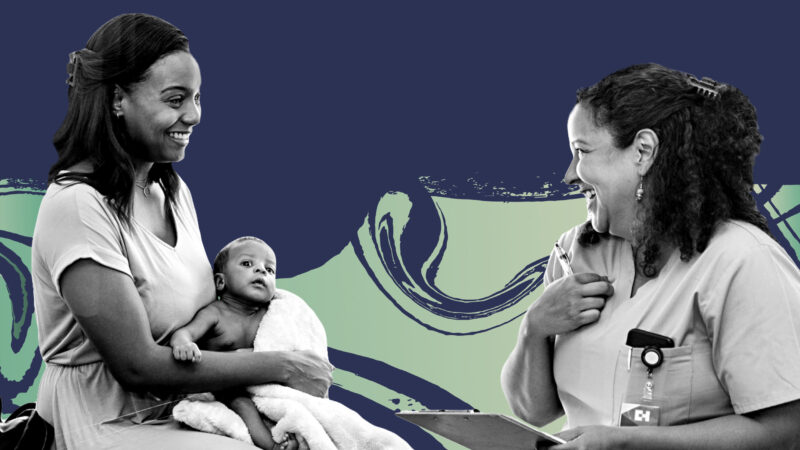
This report was led by Becky Chao; with narrative direction and editorial support from Cara Rose DeFabio, Shafeka Hashash, and Dr. Victor Roy; research support from Christelle Prophete; physician outreach support from Charlotte Bruce and Children’s Health Watch; writing and editorial support from Mara Heneghan; design expertise from Michael Conti; copyediting from Tesbih Habbal; and graphic design from Teal Media, and ongoing support from the Health and Political Economy Project and the Institute on Race, Power and Political Economy
We are thankful to the healthcare professionals—Bria Bailey, Dr. Kira Bona, Dr. Abdul El-Sayed, Dr. Tresha A. Gibbs, Dr. Zea Malawa, Morgan Miles, Dr. Eduardo Ochoa, Jr., and Dr. Victor Roy—who generously shared their perspectives and insights with us to inform the report.
“All parents deeply want to provide the best opportunities for their kids to be healthy. Yet we live in a country where we have so many impediments for parents to be able to access that for their kids.”
— Dr. Zea Malawa
“[Cash is] the missing ingredient between you providing medical care and your patient getting better.”
— Dr. Abdul El-Sayed
There’s a heart-wrenching moment in Maid, based on the real-life experience of Stephanie Land, when a pediatrician tells her that healing requires more than antibiotics. Stephanie’s daughter needs rest and a mold-free home. But they can’t afford to move. The doctor knows what’s needed, but can’t prescribe it. Stephanie can’t access it. Both are trapped in a system where your health and a good quality life depends on what you can afford.
This story isn’t unique. Every day, healthcare providers and healthcare associations like the American Academy of Pediatrics and the American Academy of Family Physicians witness the trade-offs caregivers face when tending to their children’s health. They recognize that broader factors like economic stability, educational access, and social and community context—often referred to as the social determinants of health—play a critical role in influencing people’s health and well-being.
These systemic realities aren’t abstract, they shape and constrain the choices families face every day. The challenges of raising children in today’s economy are steep, and even more so for low-income families. Caregivers routinely face no-win decisions: stay home to care for a sick child, or go to work to afford rent. For many, the cost of basic needs like food, housing, childcare, and healthcare routinely outpaces stagnant wages and overall income. Black, Indigenous, and other families of color—particularly those in immigrant and low-income communities—face additional barriers like residential segregation and a widening racial wealth gap, which further restrict access to essential resources. These structural inequities contribute to poorer health outcomes.
Evidence shows that people’s health and how we structure our economy are linked. A growing body of research finds that children who experience poverty are more likely to develop chronic illnesses and nutritional deficits. Chronic disease in the U.S. costs $3.7 trillion annually, roughly 19.6 percent of the gross domestic product.
At the same time, it’s becoming increasingly difficult for families to make ends meet. A 2022 Pew Research Center survey found that one in four parents have struggled to afford basic needs like food or housing, with stark disparities by gender, race, and class reflecting persistent wealth and income inequalities. Broadly, that number jumped to over half, 52%, among lower-income parents. About four in ten Black parents, 39%, report struggling to pay their rent or mortgage, compared to 19% of White parents. 24% of parents reported struggling to afford healthcare for their family—a figure that rises to 37% among lower-income households. Roughly 134,000 families are pushed into poverty each year by the cost of childcare alone. In 2017, the U.S. Department of Agriculture estimated that it cost $233,610 to raise a child from birth through age 17. By 2022, the Brookings Institute estimated that, adjusting for inflation, the cost for a child born in 2015 would jump to $310,605. As financial pressures mount, stress takes a visible toll: a recent poll from the American Psychiatric Association said that financial stress is now the leading cause of anxiety for Americans.
Healthcare providers, including family medicine physicians, pediatricians, oncologists, psychiatrists, midwives and doulas, increasingly recognize that economic drivers of health demand economic solutions—and these providers are turning to interventions like direct cash policies to improve families’ financial stability and ultimately deliver better care. Throughout this report we will hear from health practitioners who have seen firsthand how the flexibility and speed of direct cash can support the course of treatment and set forth new economic and health possibilities for patients.
If clinicians were able to prescribe cash today, they could affect a number of downstream health challenges that may lie ahead for patients, building the economic resiliency needed to weather an unexpected diagnosis or mental health emergency. Cash can serve as a preventative treatment, helping to minimize the health issues that stem from economic stress. Cash isn’t a substitute for medical treatment, but it removes some of the roadblocks that keep medicine from working. For families navigating a challenging financial reality, a little breathing room can mean the difference between crisis and care. For providers, it’s a tool that allows them to treat the whole patient—not just the symptoms.
Direct cash transfers can also be an effective tool to bridge the gap between structural barriers and people’s health. Cash is designed to reduce poverty and promote economic stability. Some of these kinds of policies exist today in various forms at the federal and state level in the form of the Child Tax Credit (CTC) and the Earned Income Tax Credit (EITC), as well as a growing number of cash transfer and guaranteed income programs across the country. What sets direct cash apart is its flexibility. Once distributed, there are no restrictions on how the money is used. Cash is rooted in trust and respect, offering consistent support with no work requirements or conditions. This stability allows people living with poverty and poor health to focus on what matters most: getting better.
The positive effects of direct cash are seen across a range of programs, including guaranteed income pilots and existing policies like the Child Tax Credit (CTC) and Earned Income Tax Credit (EITC). During the COVID-19 pandemic, for example, we saw the impact of direct cash in real time: stimulus checks, expanded unemployment insurance, and enhanced child tax credits sparked a historic shift—cutting child poverty in half and reduced overall poverty by 15 percent.
While more research is still needed, early findings suggest that cash can lead to improved health outcomes. The stability provided by these cash supports significantly improved recipients’ health by reducing financial stress and alleviating hardship, particularly through improved food security. Studies have also shown that direct cash transfers can enhance both mental and physical health, as well as increase access to and use of healthcare services.
Given the growing evidence around the health benefits of early intervention, providers are leading efforts to pilot direct cash programs targeting pregnancy and early childhood.The Abundant Birth Project in California, led by Dr. Zea Malawa, is the nation’s first pregnancy-focused cash transfer and guaranteed income program. Rx Kids in Michigan, led by pediatrician Dr. Mona Hanna, is the nation’s first community-wide prenatal and infant cash prescription program. Early results are promising: 59% of participants reported that Rx Kids made it easier to access health care, and 72% said it improved both their own health and their infants’. Other studies have found that mothers receiving a guaranteed income experienced fewer low-birth-weight births and preterm births. The success of Rx Kids, which began in Flint, Michigan, has sparked momentum across the state, where advocates are already pushing to make it a universal, statewide program.
This report explores the potential of direct cash policies as effective health interventions for young families. It builds on Economic Security Project’s previous Cash as Care report, which focused on the experience of mothers and caregivers, by integrating the valuable perspectives of healthcare professionals who have witnessed firsthand how cash support can restore a sense of control for families. We also draw on research from direct cash programs focused on prenatal, birthing, and postnatal families. We interviewed eight healthcare professionals: pediatricians, family doctors, a child psychiatrist, doulas, an oncologist, and public health professionals. The transcript excerpts throughout this report have been lightly edited for clarity.
The report begins by examining how direct cash support can lead to improved health outcomes: from healthier pregnancies and stronger mental health to preventing medical crises like delayed cancer treatment. We found that cash not only benefits children and parents, but also supports provider well-being. Still, cash alone is not enough. It must be paired with broader policies that address the root causes of instability and inequity across healthcare, caregiving, and the economy. Direct cash should be positioned within a larger context of structural failure: rising housing and childcare costs, persistent food insecurity, stagnant wages, the widening racial wealth gap, and diminished worker power. While this report focuses on direct cash, we recognize that sustained health equity will require bold, market-shaping interventions that make our economy truly work for all families.
In making the case for direct cash policies, we argue that improving families’ socioeconomic conditions can enable better health outcomes—and we hope to encourage a growing cohort of healthcare professionals to embrace and advocate for direct cash policies. Across interviews, providers consistently voiced frustration with only being able to offer short-term or “band-aid” solutions. Direct cash programs represent one step toward meeting that need.
We spoke to eight healthcare professionals across specialties and geographies, each offering a unique perspective on the potential of cash as a health intervention for families with young children. Most see patients regularly and serve communities that are publicly-insured, low-income, Black and brown, and/or new immigrants to the United States.

Community Birth Worker, Doula, Apprentice Midwife, and Mama

Pediatric Oncologist
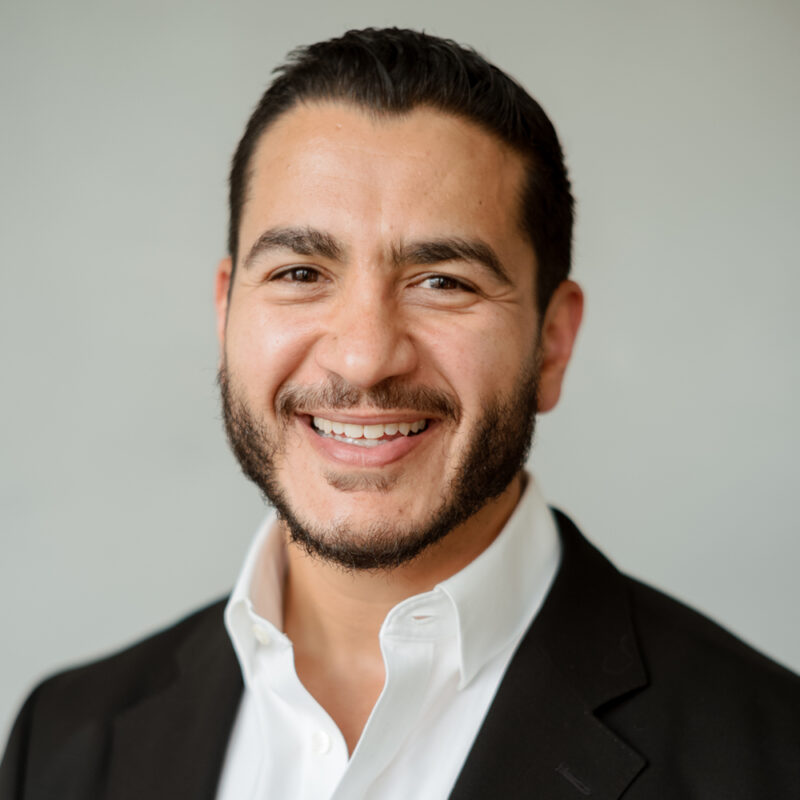
Physician, Epidemiologist, and Public Servant
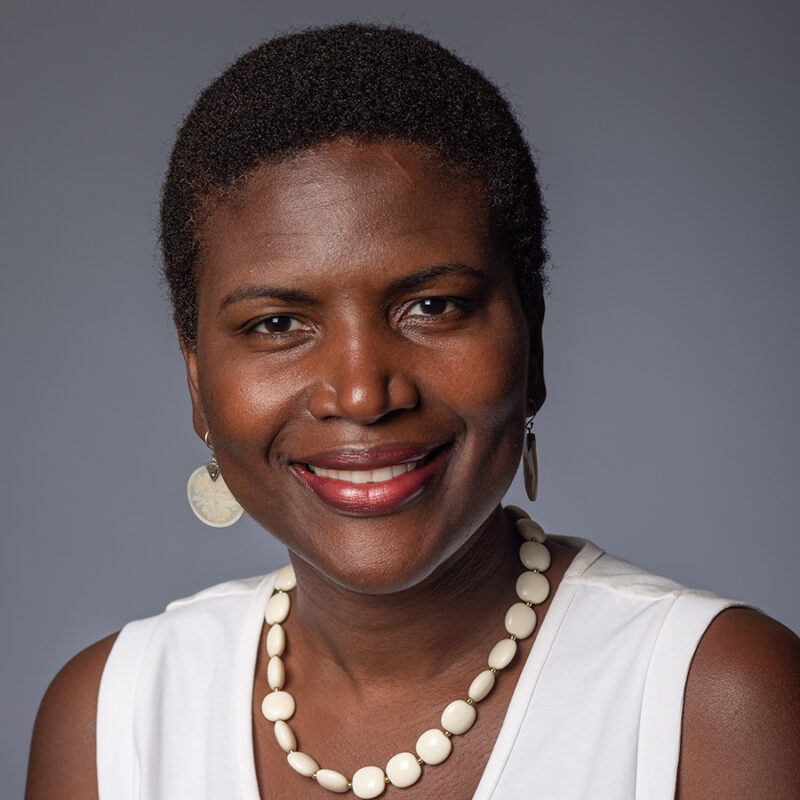
Child, Adolescent, and Adult Psychiatrist
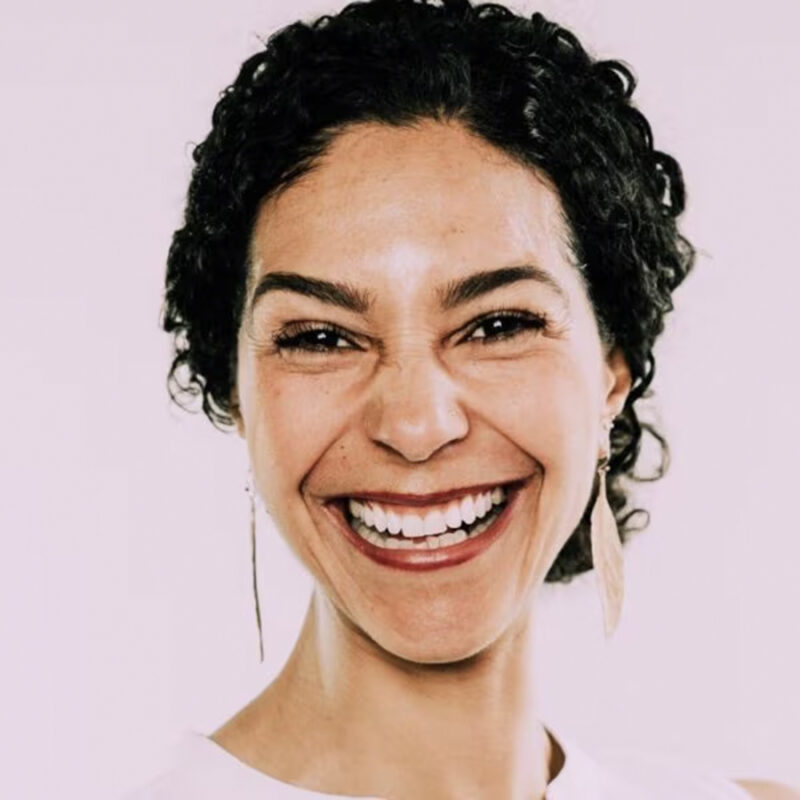
Mother, Pediatrician and Public Health Professional

Doula

Pediatrician
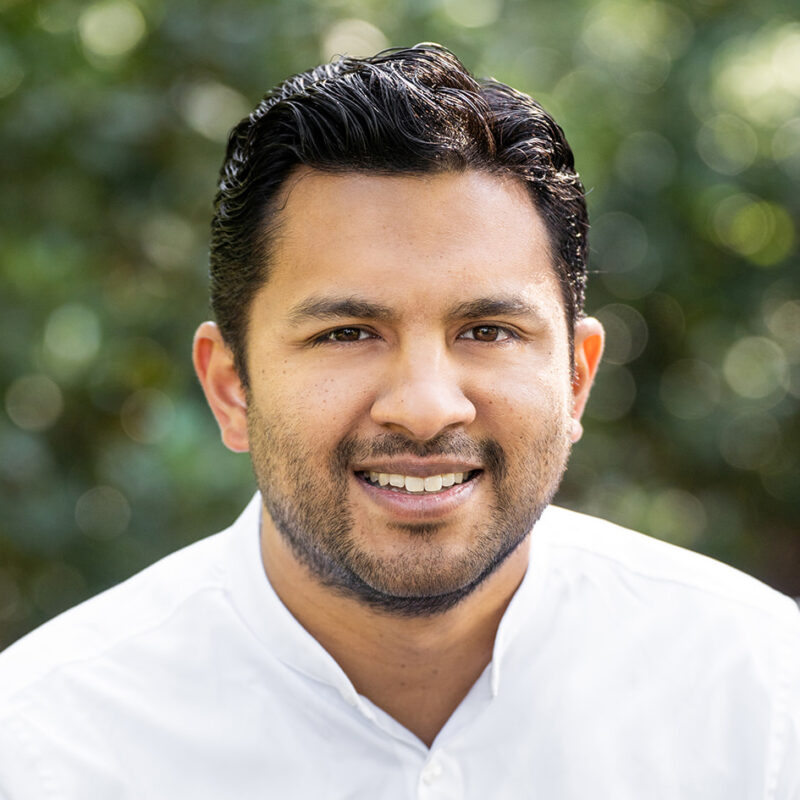
Family Physician and Sociologist
As cash transfer and guaranteed income pilots expand across the country, many are being led by physicians who see this work as essential to patient care. The following section outlines several of these initiatives and introduces the findings that follow.
| Pilot | Institution | Leader(s) | Description | |
| 1 | Abundant Birth Project | UC Berkeley; UC Davis; Oregon Health & Science University | Dr. Zea Malawa, MD | In a community-academic partnership, Expecting Justice piloted the first pregnancy income supplement program in the US called the Abundant Birth Project (ABP). ABP provides unconditional cash supplements to Black and Pacific Islander mothers as a strategy to reduce preterm birth and improve economic outcomes for our communities. |
| 2 | Addressing Childhood Poverty in Pediatric Clinical Settings | Boston Medical Center; Boston University School of Medicine | Dr. Margaret G. Parker, MD ; Dr. Arvin Garg, MD; Margaret A. McConnell, PhD | The UMass Chan Medical School has launched a study to explore how financial support for low-income mothers of pre-term infants influences parental caregiving in neonatal intensive care units (NICUs). Co-led by Dr. Margaret Parker, Professor of Pediatrics and Academic Chief of the Division of Neonatology at UMass Chan, this study functions as a practical intervention to promote positive health trajectories during a critical period of development. |
| 3 | Baby’s First Years | University of Wisconsin, Madison; Teachers College, Columbia University | Katherine Magnuson, PhD; Kimberly Noble, MD, PhD | Baby’s First Years is a pathbreaking study of the causal impact of monthly, unconditional cash gifts to low-income mothers and their children in the first four years of the child’s life. The study identifies whether reducing poverty can affect early childhood development and the family processes that support children’s development. |
| 4 | One Family Philadelphia Guaranteed Income Financial Treatment (GIFTT) | Center for Guaranteed Income Research (CGIR) at the University of Pennsylvania’s School of Social Policy and Practice (SP2); Sidney Kimmel Cancer Center at Jefferson Health; Children’s Hospital of Philadelphia | Meredith Doherty, PhD, LCSW | G.I.F.T.T. pairs a financial navigation program with guaranteed monthly income and evaluates its impact on cancer-related financial hardship for patients with cancer. This program aims to improve patients’ quality of life, reduce stress, and increase rates of treatment adherence, all of which may lead to better survival outcomes. |
| 5 | Rx Kids | Michigan State University Hurley Children’s Hospital, Pediatric Public Health Initiative | Dr. Mona Hanna, MD | Built on the tremendous success of the expanded Child Tax Credit (CTC), which cut child poverty to its lowest level in recorded history, and in line with global evidence, Rx Kids boldly reimagines how we care for each other by walking alongside families during the challenging time of pregnancy and infancy. |
| 6 | The Bona Lab at Dana-Farber Cancer Institute | The Bona Lab at Dana-Farber Cancer Institute | Dr. Kira Bona, MD, MPH | The Bona Lab at Dana-Farber Cancer Institute studies outcome disparities in childhood cancer with a focus on improving childhood cancer outcomes by systematically considering social determinants of health as risk factors in the clinical trial setting and potential targets for intervention. |
| 7 | Unconditional cash transfers to low-income preterm infants and their families | Department of Pediatrics and Center for Health Systems Research, Denver Health; PolicyLab, Children’s Hospital of Philadelphia, Philadelphia; Children’s Hospital of Philadelphia | Dr. Zoe Bouchelle, MD | Pilot that randomizes low-income caregivers of pre-term infants to receive monthly, no-strings attached transfers–a move aiming to extend evidence (which already shows these payments cut financial stress and boost caregiver mental health for families with full-term infants) to the pre-term populations. |
“Pregnancy is a microcosm of all the things that someone has experienced.”
— Morgan Miles
Millions of families have long lacked access to essential healthcare support as a result of deep-seated structural and systemic barriers. For Black, Indigenous, and low-income people, these challenges only intensify during pregnancy. Stark racial disparities in maternal and infant health outcomes reflect broader socioeconomic inequities stemming from systemic racism. These inequities directly shape who can access timely, quality care. In 2020, American Indian, Alaska Native, and Black women were more than three times as likely as white women to experience a pregnancy-related death. Despite overall declines in maternal mortality from 2022 to 2023 across most racial and ethnic groups, Black women continue to face disproportionately high mortality rates. Even Black women in geographic areas with access to higher-quality maternal care still faced higher mortality rates than white women in underserved regions, underscoring the impact of systemic racism, not just access.
For many, the onset of pregnancy often leads to a decline in household income, a consequence of a fragmented care and healthcare system that compels individuals to take unpaid time off for prenatal care, delivery, and postpartum recovery. Millions lack access to paid sick leave or family and medical leave, and even those in positions or states offering limited benefits face stringent eligibility criteria and benefit caps, leaving many without sufficient support.
This inadequate care infrastructure disproportionately impacts Black, brown, and Indigenous women—communities already facing elevated risks of pregnancy complications and maternal mortality. Black women, in particular, confront significant challenges. In a given year, approximately 2.9 million leaves are needed by working Black women, yet 1.1 million—or 38 %—are not taken. Among the leaves taken, about 42% are without pay, with 55%of parental leaves and 40% of health-related leaves being unpaid. This lack of paid leave contributes to substantial financial losses, with Black women losing an estimated $3.9 billion in wages annually while on leave.
Welcoming a new child also brings a surge of new costs correlating to a second hit to household income. New medical bills, diapers, formula and medical appointments. Roughly half of U.S. families can’t afford enough diapers to keep their baby clean and healthy, increasing the risk of painful rashes and urinary tract infections that require more trips to the doctor. Data corroborates this with poverty rates spiking around childbirth, with poverty rates among mothers rising two months before birth and peaking in the first three months postpartum.
These financial pressures have significant health implications—particularly when an estimated 27 million people in the U.S. remain uninsured. In this context, public insurance through Medicaid and the Children’s Health Insurance Program (CHIP) help fill a critical gap in coverage for soon-to-be parents. According to a 2021 KFF survey, Medicaid covers more than four in ten births nationally, the majority of births in several states, and half of births in rural communities., For many, pregnancy may mark the first time they’ve had access to healthcare as adults, as a result of this expanded coverage.
It is clear that the system is failing families and this has financial and health implications for parents and children alike. We need to explore new policy interventions like direct cash support that can better provide stability to families during this critical intervention window—what Dr. Malawa calls “the flexibility to put together the constellation of resources they need for a healthy pregnancy and birth, because only they can know exactly what is missing.” Direct cash support could bring several benefits to families, including:
Childcare also provides families with greater opportunities for self care and medical interventions, critical for new parents. Miles shared how one mother who, with support from her organization GALS, might have skipped critical hospital care for postpartum eclampsia if not for access to childcare through their perinatal support program.
Preventative Care“I see the role of doctors as like translators and storytellers—a role we can play because we’re confronted with difficult examples all the time. Oftentimes we are forced to be firefighters in the hospital or clinic, versus actually using those stories to prevent fires in the first place.”
— Dr. Victor Roy
Preventive healthcare is increasingly recognized for its potential to reduce long-term medical costs and improve public health outcomes. Investing in upstream, preventative measures can include direct cash policies. By addressing health issues early, we can reduce the incidence of chronic diseases, enhance outcomes from physical and mental health to educational attainment, and decrease healthcare costs.
“There is this trade-off between time, money, and attention to your kid. All three are really important for the well-being of children…But if you have to arbitrage your time to make money—so that you can care for the basic needs of your kid—that is time you’re not spending with your child, giving them that attention. It’s a tension that almost everybody with young kids can speak very viscerally to.”
— Dr. Abdul El-Sayed
“Without the development of a safe, comfortable relationship between a parent and young child, that child may struggle more as a teenager. No one would say, ‘Oh, your parent was working too much to provide for your basic needs’, but in truth, investing in families’ time together is a mental health, resilience-building intervention.” — Dr. Tresha A. Gibbs
In psychiatry, providers often prescribe social interventions, such as spending time with family and friends, to promote social and emotional health. Enabling parents to spend more time with their children is fundamental to cultivating a strong parent-child relationship, which supports long-term social and emotional well-being. Dr. Gibbs emphasized that this relationship lays the foundation for healthy future relationships in the decades to follow.
In New Mexico’s guaranteed income pilot program, the percentage of rural participants who reported not forgoing a meal due to lack of income rose by 12%. Notably, this progress occurred during a period of widespread inflation and spiking food prices, making the gains even more significant. Additionally, the Georgia Resilience & Opportunity Fund’s In Her Hands study found that participants were 27.3% less likely to worry about affording food and 28.8% less likely to rely on low-cost food for their children. A study found that the Child Tax Credit (CTC) was linked to a significant reduction in food insufficiency among households with children, particularly those facing economic shocks. Research estimated decreases of up to 5.2 percentage points in food sufficiency, with the largest gains among low-income, Hispanic and Black households.
“It doesn’t matter if the kids are in therapy. It matters if the parent is in therapy, because the [kids’] wellness is completely dependent on the parents’ wellness.”
— Dr. Zea Malawa
Parenting is inherently difficult—and the pandemic made it even harder. Even before COVID-19, stress among caregivers was on the rise, but the global public health crisis pushed many families to a breaking point, especially those already facing financial hardship.
On the heels of the pandemic in 2024, then-U.S. Surgeon General Vivek Murthy issued an advisory titled, Parents Under Pressure, highlighting the critical link between parental mental health and children’s long-term well-being. According to the advisory, 33% of parents report high levels of stress, compared to 20% of other adults, and 48% of parents say that most days their stress is completely overwhelming, compared to just 26% of other adults. A review of 108 studies found that food insecurity leads to symptoms of parental depression, anxiety, and stress. Sources of this stress include financial strain, economic instability, time demands, and concerns about children’s health.
These mental health stressors often manifest physically. Dr. Roy observed that many young parents experienced physical symptoms. He noted, “I had so many patients, oftentimes young parents, that would just have heartburn. I would be prescribing them Pepcid twice a day. And really the heartburn was just from the cognitive load that comes with time scarcity of trying to figure out how to do it all. I would be doing a lot less Pepcid prescriptions if people just had a little bit more support in their lives.”
In multiple guaranteed income pilots, parents used cash to access mental health support that otherwise may have been out of reach. As Dr. Malawa observed among participants in the Abundant Birth Project, “Moms have been using the money to get some therapy. It’s been a gift for these moms to be able to get culturally concordant therapy during and immediately after pregnancy as a beautiful way to get started in their parenting journey.” The SEED randomized controlled trial “reported lower rates of income volatility than control, lower mental distress, better energy and physical functioning, greater agency to explore new opportunities related to employment and caregiving, and better ability to weather pandemic–related financial volatility”. Initial findings from guaranteed income pilots like Elevate Boulder in Colorado report that psychological wellness rose by 20 percentage points, while moderate to severe disorders declined by 14 percentage points just eight months into the pilot. Similarly, the In Her Hands pilot program found that participants who received cash were 59.3% more likely to score as having “likely no mental disorder” on the Kessler 10 Psychological Distress Scale compared to the control group.
Likewise, studies on the impact of the Child Tax Credit (CTC) have found reduced symptoms of depression and anxiety among low-income adults, with pronounced outcomes among Black and brown adults. The Earned Income Tax Credit (EITC) has also been noted for its positive health outcomes for adults including better overall health outcomes, lower blood pressure, less inflammation (possibly linked to lower stress), and better mental health outcomes. Research shows that larger EITC payments correlate with greater health benefits, reinforcing the connection between economic stability and well-being. Recent evaluations of the 2021 expanded Child Tax Credit (CTC) continue to affirm these trends, demonstrating mental health improvements tied to reduced economic strain.
“A guaranteed income for the patients is actually a huge burden off of the providers, because now we don’t have to pretend to be social workers and magicians, while also trying to be providers.”
— Dr. Zea Malawa
Providers understand that their patients need far more than a medical diagnosis or treatment. They need safe housing, nutritious food, reliable transportation, and economic stability. Many providers use screening tools like the Boston Medical Center’s Thrive Screening Tool, Adverse Childhood Experiences (ACEs) questionnaires, and various social determinants of health screenings for social drivers of health that children’s hospitals are developing. But even with these tools, providers often have limited options. Hospitals may offer ad hoc programs to connect patients to resources like housing assistance or food banks, or provide vouchers for transportation or groceries, if they’re available. While these screenings can help link patients to community resources, the process is indirect and often involves long waitlists.
As Dr. Malawa explained, “Patients are coming in with real needs. I need a place to sleep tonight, and all you have to offer is a pamphlet? That’s really painful.” The stresses of the system take a toll on the doctors forced into impossible schedules. She continued, “We don’t have the time. You have 15 minutes. We don’t even have the time to hear about how hard it is for you. We have the time to check your vitals, figure out diagnosis, and get you out the door, and there’s a moral injury in ignoring the very real needs of the patients. That takes a toll.” Dr. Malawa went on to describe the “real beauty” in being able to offer a guaranteed income and bear witness to the joy of a happier pregnancy.
Given the severity and complexity of the challenges providers face, more than 45% of providers reported experiencing at least one symptom of burnout in the last year. Burnout peaked during the COVID-19 pandemic and continues to raise urgent questions about its impact on access to care, patient safety, and care quality. Burnt-out providers are more likely to exit the medical field—further reducing patients’ access to care and disrupting continuity of care. It can also damage provider-patient relationships contributing to depersonalization, where patients are treated as cases rather than people. Across our interviews, a recurring theme emerged: unrestricted cash support doesn’t just help patients—it also relieves pressure on providers.
Ultimately, direct cash policies like cash transfer and guaranteed income aren’t just a lifeline for families—it’s a release valve for providers. It restores the time, trust, and dignity needed on both sides of the exam room. When families are supported, providers can actually practice the kind of care they were trained to deliver—without moral injury, without burnout, and without having to choose between compassion and capacity.
Stabilizer for Families“Families are torn out of whatever existing economic structure or safety net that they have.”
— Dr. Kira Bona
This report has thus far focused on near-universal family experiences—childbirth, stress, and the demands of parenting—but our interviewees also included providers who regularly work with patients at the worst crisis points of their lives, those facing an unexpected medical emergency. Families can’t predict the medical diagnoses they might face over a lifetime—but their ability to manage them is deeply tied to economic stability. A single emergency can tip a household into cascading hardship, especially when 37% of U.S. families can’t afford an unexpected $400 expense. The type of medical challenges families might navigate include:
Families with higher incomes are more likely to secure timely treatment and reach subspecialists. But even when children with cancer are enrolled in clinical trials and receive similar standards of care—regardless of private or public insurance—disparities persist. For example, children with neuroblastoma covered solely by Medicaid—used as a proxy for low household income—experience a 25% higher relapse rate.
It’s with that knowledge that Dr. Bona and colleagues at the Dana-Farber Cancer Institute developed Pediatric RISE (Resource Intervention to Support Equity), a program delivering cash transfers to families with children undergoing cancer treatments. While still under way, early data from the pilot shows that families used the funds for rent or mortgage payments, groceries, utilities, and transportation—leading to a reduction in reported financial hardships over a three-month period.
Research from multiple guaranteed income programs show that cash helps families stay current on their bills. In the Cambridge RISE program, the housing burden exclusively decreased for the treatment group, with the additional benefit of utilities, whereas the control had increased volatility amongst utility payments. Maintaining electricity is not just about stability for Dr. Ochoa’s patient, it’s about their child’s survival.
“This is a critical time. It’s an opportune moment for us to help. We know if mothers can be in the NICU more often and overcome the financial stressors that it takes to be there, including paying for transportation, parking, childcare costs and rent, they will be able to benefit…”
— Dr. Margaret Parker, Professor of Pediatrics and Academic Chief of the Division of Neonatology at UMass Chan and co-lead of the NICU study
Cash support could be a crucial “curb cut” allowing every family access to health if we design support for those most in need.
Cash in ContextHealth is a fundamental human right.
Yet in the United States, our health has been largely shaped by a prevailing economic paradigm that centers “free market” thinking and reinforces stratification and inequities by race, gender, and ethnicity. We see this in the excess death Americans experience compared to peer nations, especially among Black and Native Americans. We also see this in the maternal mortality crisis, which is especially dire for Black mothers across socioeconomic status., This system is underpinned by cultural narratives that perpetuate individualism and challenge deservingness.
Guided by this paradigm, the U.S. has for over 40 years pursued a health approach centered on profit-driven biomedical and clinical interventions. In addition to being financially costly, this model ignores the nonmedical factors that play a critical role in health – political-economic drivers such as economic insecurity, segregation, and homelessness. The results are clear: this approach has failed. The U.S. now has one of the most expensive healthcare systems in the world, yet it consistently delivers some of the worst health outcomes across peer nations.
To fix this broken system, we need intentional policies and governmental action that ensure all people have the resources they need to lead healthy lives. The onus of affording and accessing care should not fall on individuals to navigate alone.
Improving our health will require new economic thinking that invests in people, delivers the systems of care we need through each stage of our lives, and affirmatively includes all social identity groups, especially people who are most marginalized by our current systems.
Direct cash policies – from stimulus checks to guaranteed income programs to the Child Tax Credit – are such investments. These programs provide flexibility, dignity, and agency by allowing people to use their resources to best meet their needs. Whether this support covers transportation to a doctor’s appointment, nutritious food, or paying off a bill, these decisions can each directly or indirectly improve health and wellbeing.
As the health practitioners interviewed for this report shared, too often the solution to a patient’s health challenge is not only a medical intervention but an economic one. Cash programs can quickly and directly address these challenges. Further, by adding a responsive, effective intervention that allows them to directly target patients’ needs, cash programs can also improve health practitioner wellbeing and support their work to treat both the medical and nonmedical health needs their patients face. Cash programs alone cannot fix decades of bad policy and an economic system geared towards profit over people’s health and wellbeing. We need stronger labor laws to ensure all workers, including health and care workers, earn a living wage and have protections when they or their loved ones need care. We need reparative wealth-building policies, like baby bonds, that challenge existing economic and racial segregation. We need universal healthcare coverage and inclusive investments in our healthcare system to ensure people can access the care they need. But by empowering patients and practitioners, cash can be an essential part of the missing prescription for both patients and our system as a whole.
This report is the result of deep collaboration between healthcare professionals, economic justice advocates, and policy strategists, led by the Economic Security Project. It reflects our shared analysis of—and our shared commitment to—advancing cash as a critical health intervention. Alongside the Economic Security Project, at the Health and Political Economy Project we proudly support this to champion both direct cash as care and the structural changes needed to ensure health for all.
“In cancer medicine, we don’t wait to understand the mechanism before we act. When a child has a high-risk mutation, we immediately intensify treatment because we know they’re more likely to relapse, and this approach has been successful for decades. We can take a similar approach to poverty.”
– Dr. Kira Bona
Cash isn’t a silver bullet—but it can be a critical floor and a stable foundation from which health, healing, and opportunity can grow. As the healthcare providers interviewed for this report have demonstrated, we don’t need to fully solve poverty before working to reduce its effects. The skyrocketing cost of healthcare and prescription drugs—symptoms of a broken healthcare market—require large-scale, market-shaping reform. But while we work toward that future, families are hurting now. Their economic pain is immediate—and it impacts their health every day. This report has highlighted physicians directing and researching cash transfer and guaranteed income pilots, but every healthcare professional has a role to play.
Healthcare voices carry weight: In our 2024 in-depth communications and narrative survey, healthcare practitioners—especially those working directly with patients—were identified as some of the most persuasive community validators. When doctors, nurses, doulas, and care teams speak out about the social determinants of health and the impact of cash, both the public and policymakers listen.
You can act now:
Healthcare providers are on the frontlines of economic insecurity. They see, every day, how poverty and financial stress undermine children’s health—and they may be the strongest partners to families in securing economic resources for families. While structural solutions and systematic changes will take decades to build towards, direct cash interventions offer real, tangible impacts for people today. The freedom, trust, and stability that cash brings can improve health outcomes, rebuild trust in broken systems, and give providers the dignity of offering real solutions—not just referrals or workarounds. Together, we can advocate for the solutions that both patients and providers deserve.